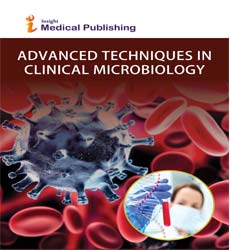Immunogenicity and Bioavailability: Significance
Introduction
Development of effective preventative interventions against SARS-CoV-2, the etiologic agent of COVID-19 is urgently needed. The viral surface spike (S) protein of SARS-CoV-2 is a key target for prophylactic measures as it is critical for the viral replication cycle and the primary target of neutralizing antibodies. We evaluated design elements previously shown for other coronavirus S protein-based vaccines to be successful, e.g., prefusion-stabilizing substitutions and heterologous signal peptides, for selection of a S-based SARS-CoV-2 vaccine candidate. In vitro characterization demonstrated that the introduction of stabilizing substitutions (i.e., furin cleavage site mutations and two consecutive prolines in the hinge region of S2) increased the ratio of neutralizing versus non-neutralizing antibody binding, suggestive for a prefusion conformation of the S protein. Furthermore, the wild-type signal peptide was best suited for the correct cleavage needed for a natively folded protein [1]. These observations translated into superior immunogenicity in mice where the Ad26 vector encoding for a membrane-bound stabilized S protein with a wildtype signal peptide elicited potent neutralizing humoral immunity and cellular immunity that was polarized towards Th1 IFN-γ. This optimized Ad26 vector-based vaccine for SARS-CoV-2, termed Ad26.COV2.S, is currently being evaluated in a phase I clinical trial (ClinicalTrials.gov Identifier: NCT04436276). Adjuvants are central to the efficacy of subunit vaccines. Aluminum hydroxide (alum) is the most commonly used vaccine adjuvant, yet its adjuvanticity is often weak and mechanisms of triggering antibody responses remain poorly understood. We demonstrate that site-specific modification of immunogens with short peptides composed of repeating phosphoserine (pSer) residues enhances binding to alum and prolongs immunogen bioavailability.
The pSer-modified immunogens formulated in alum elicited greatly increased germinal center, antibody, neutralizing antibody, memory and long-lived plasma cell responses compared to conventional alum-adsorbed immunogens. Mechanistically, pSer-immunogen:alum complexes form nanoparticles that traffic to lymph nodes and trigger B cell activation through multivalent and oriented antigen display. Direct uptake of antigen-decorated alum particles by B cells upregulated antigen processing and presentation pathways, further enhancing B cell activation [2]. These data provide insights into mechanisms of action of alum and introduce a readily translatable approach to significantly improve humoral immunity to subunit vaccines using a clinical adjuvant. Epitope, also called antigenic determinant, portion of a foreign protein, or antigen, that is capable of stimulating an immune response. An epitope is the part of the antigen that binds to a specific antigen receptor on the surface of a B cell. Binding between the receptor and epitope occurs only if their structures are complementary. If they are, epitope and receptor fit together like two pieces of a puzzle, an event that is necessary to activate B-cell production of antibodies [3]. The antibodies produced by B cells are targeted specifically to the epitopes that bind to the cells’ antigen receptors. Thus, the epitope also is the region of the antigen that is recognized by specific antibodies, which bind to and remove the antigen from the body.
Many antigens have a variety of distinct epitopes on their surfaces. Each epitope is capable of reacting with a different B cell antigen receptor. In addition, the blood serum of an immunized person or animal normally contains a mixture of antibodies, all capable of combining with the same antigen but with different epitopes that appear on the surface of the antigen. Furthermore, antibodies that bind to the same epitope often have different abilities to bind to that epitope.
References
1 Barouch DH, Frank LT, Frank W, Daniel JS, Galit A, et al. (2018) Evaluation of a mosaic HIV-1 vaccine in a multicentre, randomised, double-blind, placebo-controlled, phase 1/2a clinical trial (APPROACH) and in rhesus monkeys (NHP 13-19). Lancet 392: 232- 243.
2 Liu J, Bonnie AE, Diana ML, Matthew D, Peter A, et al., (2008) Magnitude and phenotype of cellular immune responses elicited by recombinant adenovirus vectors and heterologous prime-boost regimens in rhesus monkeys. J Virol 82: 4844–4852.
3 Vander L, Renske B, Marjolein HM, Joke D, Yolinda van P, et al. (2020) Adenovector 26 encoded prefusion conformation stabilized RSV-F protein induces long-lasting Th1-biased immunity in neonatal mice. npj Vaccines 5, 49.
Abstract
Mark Steven*
Department of Infectious Diseases, University Hospital Center “Mother Teresa”, Tirana, Albania
*Corresponding author:
Mark Steven
Department of Infectious Diseases, University Hospital Center “Mother Teresa”, Tirana, Albania
E-mail: Msteven235@gmail.com
Received: August 08, 2021, Accepted: August 22, 2021, Published: August 30, 2021
Citation: Steven M (2021) Immunogenicity and Bioavailability: Significance. Adv Tech Clin Microbiol. Vol.3 No.1:104
Open Access Journals
- Aquaculture & Veterinary Science
- Chemistry & Chemical Sciences
- Clinical Sciences
- Engineering
- General Science
- Genetics & Molecular Biology
- Health Care & Nursing
- Immunology & Microbiology
- Materials Science
- Mathematics & Physics
- Medical Sciences
- Neurology & Psychiatry
- Oncology & Cancer Science
- Pharmaceutical Sciences
